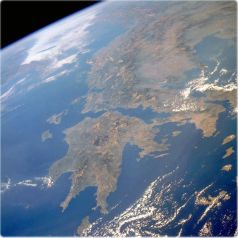Destination Greece
In the second half of the 20th century, destination Greece came to be recognized as state-of -the-art in global tourism industry and in traveler’s conscience as well. The Greek tourism industry has come a long way since a series of films in the late 1950’s and early 1960’s, like “Boy on a Dolphin”, “Never on Sunday” and Zorba the Greek” brought to Western viewers the charms and spirit of a land slowly recovering from the ravages of nearly a decade of war.
In actual fact, those were the days when there was no Greek tourism industry, in the sense of facilities catering for large numbers of foreign or domestic visitors, and accounting for a big segment of economic activity and currency earnings. Those were the days when traveling for leisure –especially abroad– was still the prerogative of the wealthy. Most people who ventured this far east to Europe’s backwater had for long been academics and students (archaeologists, anthropologists, theologians), or simply curious explorers. They would more aptly be described as travelers rather than tourists. The occasional call by a cruise ship completed the picture of a extremely different "destination Greece", comparing it with what it is today. In effect, those were the days when Greece’s tourism industry consisted merely of traditional city hotels and a few spa resorts -with only domestic patrons and virtually only in summer.
Films shot in Greece of 1950’s and early 1960’s helped this country differentiate its traditional, predominantly classical and mystic image: A raw, stunningly scenic and unspoiled land with friendly and exuberant people waited to be discovered. A near-barren landscape baked bronze by the sun, white-painted houses, tiny domed churches, windmills and golden beaches along the intricate lace of its coastline –all against the background of the breathtaking blue of the Aegean Sea. Sun, sea and sand became Greece’s three new pillars as the post-war economic boom in the West fueled mass tourism. Destination Greece was born.
Since then, tourism, along with shipping, is one of Greece’s two main industries and can claim to have largely changed the country’s face. Well-known Myconos, once a place of proverbial poverty but now the idealized version of a Greek island and one of the indisputable benchmarks of destination Greece, has the country’s highest income per capita. Sun, sea and sand remain the Greek tourism industry’s most potent weapons and the country as a destination is still predominantly identified with its islands –once common places of exile for political dissidents since Roman times! Three Greek island destinations, Corfu, Spetses and Hydra –where “Boy on a Dolphin” was filmed in 1957– recently figured in a Vanity Fair list of the 46 preppiest places to have a summer home worldwide. But the islands comprise only a fraction of the country’s total area, and the predominance of the core “sun, sea and sand” theme, along with the ever-present appeal of classical antiquities, has largely obscured Greece’s many other extraordinary attractions.



